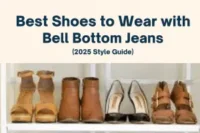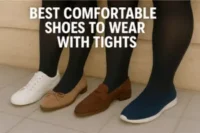Guide to Sports Shoe Types & Choosing the Right One
Published: 23 Sep 2025
👟 Why Sports Shoes Aren’t All the Same
Sports shoes aren’t just for athletes—they’re made for movement. Whether you’re running, training at the gym, or playing a sport, the right type of sports shoes can protect your feet, boost comfort, and help you perform better.

There’s no “one-size-fits-all” here. Running shoes, for example, are built for forward motion and shock absorption. Court shoes support side-to-side movement. Trail shoes grip uneven surfaces. Wearing the wrong shoes for the wrong activity can lead to injuries, sore feet, or wasted money.
This guide is for everyone—from beginners to fitness lovers—looking to understand different sports footwear types, how they work, and which ones fit their needs. We’ll also share real-life tips to help you buy the right pair. Ready to walk, run, or train smarter? Let’s start.
🏃♂️ Common Types of Sports Shoes
Not all sports shoes are built the same. Each type supports a different kind of movement, surface, or sport. Here’s a simple breakdown:

🏃 Running Shoes
Running shoes are made for forward motion. They offer soft cushioning and shock absorption—ideal for road running, marathons, and treadmill workouts.
⛰ Trail Running Shoes
These shoes have rugged soles, extra grip, and protective uppers. Trail running shoes are perfect for rocky, muddy, or uneven outdoor paths.
🏋️ Cross-Training Shoes
Designed for gym workouts and mixed exercises, cross-training shoes support side steps, jumping, and lifting—all in one shoe.
🏀 Court Shoes
Used in sports like tennis, basketball, and volleyball, court shoes support quick direction changes and give a firm grip on indoor courts.
⚽ Cleats / Studded Shoes
Cleats have studs or spikes that dig into turf or grass. They’re essential for sports like football, cricket, or rugby.
🦶 Minimalist Shoes
These lightweight shoes offer little cushioning and encourage natural foot movement. Ideal for runners who want a barefoot feel.
🧽 Maximalist Shoes
Built with thick soles and high cushioning, maximalist shoes reduce impact during long-distance runs and offer lasting comfort.
Each type of athletic shoe is built with a purpose. Whether you’re training indoors, running trails, or playing on the field, choosing the right shoe helps you stay comfortable, perform better, and avoid injuries. In the next section, we’ll show you how to pick the best type for your personal needs.
🧠 How to Choose the Right Type of Sports Shoes
Picking the right pair of sports shoes depends on how you move, where you move, and what your feet need.

🏃♀️ Choose Based on Activity
Different activities need different support. Use running shoes for road running or marathons. Pick cross-training shoes for gym sessions. If you play sports like basketball or tennis, go for court shoes with side support.

🌍 Consider the Surface
Are you running on a trail, gym floor, or grassy field? For rocky paths, use trail running shoes. For turf, go with cleats. Smooth surfaces need grip from court shoes or trainers.
🦶 Match Your Foot Type
Flat feet? High arches? Get shoes with proper arch support. Some brands even offer athletic shoes designed for overpronation or wide feet.
✅ Choose Smart
Think comfort, not just looks. Try shoes on, walk around, and make sure they fit well. The right type gives better performance—and keeps your feet happy.
🦶 Understanding Your Feet
To choose the right sports footwear, you first need to understand your own feet. Here’s what to check:
- 👣 Know Your Arch Type
- Flat arch
- Neutral arch
- High arch
→ Shoes with proper arch support reduce pain and injury.
- Flat arch
- 🔄 Understand Pronation
- Overpronation: foot rolls inward
- Underpronation: foot rolls outward
- Neutral pronation: balanced movement
→ Some running shoes help correct overpronation.
- Overpronation: foot rolls inward
- 🧪 Do the Wet Foot Test
- Wet your foot, step on paper
- Check the shape of your footprint
→ This reveals your arch type and guides shoe choice.
- Wet your foot, step on paper
- ✅ Focus on Fit
- Good athletic shoes match your foot shape
- Right fit = better support, comfort, and performance
- Good athletic shoes match your foot shape
Understanding your feet helps you choose smarter—and move better.
🧩 Features to Look For in Sports Shoes
Not all sports footwears are made equal. Look for these key features before buying:
- 🛏 Cushioning
- Reduces impact during running or jumping
- Essential in running shoes and maximalist shoes
- Reduces impact during running or jumping
- 🦶 Arch Support
- Helps if you have flat feet or high arches
- Prevents foot fatigue and injury
- Helps if you have flat feet or high arches
- 🪶 Lightweight Design
- Important for speed, especially in minimalist shoes
- Keeps legs from tiring during long workouts
- Important for speed, especially in minimalist shoes
- 🧼 Breathability
- Mesh or knit uppers allow airflow
- Keeps your feet cool and dry
- Mesh or knit uppers allow airflow
- 👣 Grip and Traction
- Needed for trails, courts, and turf
- Found in trail running shoes, court shoes, and cleats
- Needed for trails, courts, and turf
- 🦵 Ankle and Heel Support
- Keeps your foot stable during side-to-side motion
- Crucial for court sports and training
- Keeps your foot stable during side-to-side motion
A good athletic shoe protects, supports, and boosts your performance—all in one step.
📊 Sports Shoe Comparison Table
Choosing the right sports shoe can be confusing, especially when they all look good. Use this simple chart to compare types by use, support, and surface.
| Shoe Type | Best For | Support | Surface |
| Running Shoes | Road running, marathons | Cushioning, heel support | Pavement, treadmill |
| Trail Running Shoes | Hiking, outdoor running | Grip, toe protection | Rocks, dirt, uneven paths |
| Cross-Training Shoes | Gym, HIIT, mixed workouts | Lateral and arch support | Gym floor, indoor surfaces |
| Court Shoes | Tennis, basketball, volleyball | Ankle and side support | Indoor courts |
| Cleats | Football, cricket, rugby | Stud grip, firm support | Grass, turf |
| Minimalist Shoes | Natural running, foot strengthening | Light, flexible | Road, track, light trails |
| Maximalist Shoes | Long-distance running, recovery days | Extra cushioning | Road, treadmill |
Use this chart to match your activity to the shoe type. The right athletic shoes not only feel better—they help you move better.
🔄 New Trends in Sports Footwear
The world of sports shoes keeps evolving. Brands are blending tech, comfort, and style to meet every need. Here are the latest trends to watch:

🚀 Super Shoes
High-performance running shoes now come with carbon plates and energy-return foam. These maximalist shoes help runners go faster with less effort.
🌱 Eco-Friendly Materials
Many brands now use recycled plastic, plant-based fabrics, and sustainable rubber. These athletic shoes are better for your feet and the planet.
🧠 Smart Shoe Tech
Some shoes now track steps, posture, and pressure using sensors. Ideal for serious athletes or those recovering from injury.
🚻 Gender-Specific Designs
Men and women often have different foot shapes. New designs offer better arch support and fit based on gender.
Staying updated with these trends can help you pick sports footwear that lasts longer and performs better—while keeping up with style and innovation.
⚠️ Mistakes to Avoid When Buying Sports Shoes
Buying the wrong sports shoes can lead to discomfort, injuries, or wasted money. Here are common mistakes you should steer clear of:
| Mistakes to Avoid |
|---|
|
Avoid these mistakes, and you’ll step into the perfect pair every time.
🧼 Care & Maintenance Tips for Sports Shoes
Taking care of your sports shoes helps them last longer and perform better. Here’s how to keep them in top shape:

- 🧽 Clean Them Regularly
- Use a soft brush and mild soap. Avoid the washing machine unless the label says it’s safe.
- Use a soft brush and mild soap. Avoid the washing machine unless the label says it’s safe.
- 🌬 Let Them Air Dry
- Don’t use direct heat. Instead, stuff the shoes with newspaper and let them dry naturally.
- Don’t use direct heat. Instead, stuff the shoes with newspaper and let them dry naturally.
- 👟 Rotate Between Pairs
- If you exercise daily, switch shoes to give each pair time to recover and stay fresh.
- If you exercise daily, switch shoes to give each pair time to recover and stay fresh.
- 🧴 Use Odor and Water Protection
- Spray your athletic shoes with odor-fighting or waterproof products to keep them clean and dry.
- Spray your athletic shoes with odor-fighting or waterproof products to keep them clean and dry.
- 🔁 Replace When Worn Out
- Most running shoes and cross-trainers should be replaced every 500–800 km.
Good care means better performance, fewer injuries, and cleaner kicks.
🎯 Wrap-Up: Step into the Right Pair
Not all sports shoes are the same—and now you know why. Whether you need running shoes for the road, cleats for the field, or cross-training shoes for the gym, choosing the right type can protect your feet, boost your performance, and keep you injury-free.
Think beyond style. Focus on fit, purpose, and comfort. Pay attention to your foot type, arch support, and how the shoes feel from the first step.
With the right athletic shoes, you don’t just move better—you feel better. So next time you’re shopping for a new pair, use what you’ve learned here to walk smarter, run stronger, and train safer.
❓ FAQs People Ask
You should replace your running shoes when the cushioning wears out or the grip is damaged. That’s usually after about 400–500 miles (or 650–800 km), depending on surface and usage. Watch for flat midsoles, squished heel counters, or slippery outsoles. If your sports footwear no longer feels supportive or comfortable, it’s time for a new pair. Proper replacement helps prevent injuries and keeps performance high.
Road running shoes are made for flat, hard surfaces and focus on cushioning and a smooth ride. Trail running shoes have rugged soles and better grip for mud, rocks, or uneven terrain. Cross‑training shoes mix features: they give sideways support, stability, and work for gym workouts, HIIT, or classes. Choosing the type that matches your surface and exercise routine keeps your athletic shoes safe and useful. The wrong type leads to discomfort or injury.
Yes, arch support helps shape and function. If you have flat feet or high arches, shoes with good arch support reduce strain on your feet, knees, and back. Neutral arches still benefit from light support. Many running and cross‑training shoes include built‑in arch support. Proper support improves comfort and helps prevent overpronation or other foot issues.
You can use running shoes for light gym work or walking, especially if the workouts are simple. But for sports or training with side‑to‑side moves, changing direction, or jumping, court shoes or cross‑trainers are better. They give lateral support and safer stability. Using running shoes for everything often speeds up wear.
Shop for shoes in the evening when your feet are slightly larger—this helps you get a more accurate fit. Use the same socks you wear during workouts. There should be a little space—about a thumb’s width—between your longest toe and the front of the shoe. Your heel should stay secure without slipping. Try walking or jogging in them to make sure they feel good right away.

- Be Respectful
- Stay Relevant
- Stay Positive
- True Feedback
- Encourage Discussion
- Avoid Spamming
- No Fake News
- Don't Copy-Paste
- No Personal Attacks



- Be Respectful
- Stay Relevant
- Stay Positive
- True Feedback
- Encourage Discussion
- Avoid Spamming
- No Fake News
- Don't Copy-Paste
- No Personal Attacks





